Processing
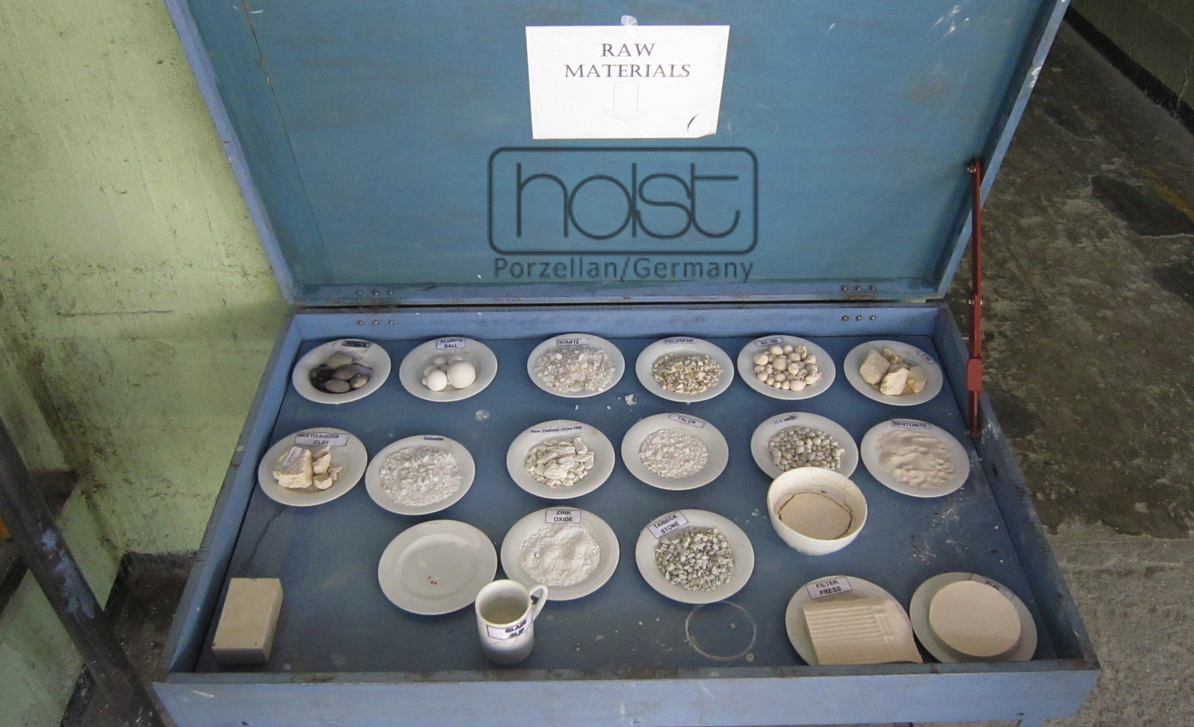
Even the mere understanding of the ingredients or raw materials of porcelain requires extensive knowledge of chemistry and physics. The diagram above shows the raw material composition of 18 ingredients for high fired hard porcelain. Another factory, also for hard porcelain, defines its composition as follows "23 raw materials such as Raw Quartz, Cal. China Clay / Premium, Alumina, Feldspar, P. S Talc, Calcium Carbonate, Calcine Quartz, China Clay / Premium, Zinc Oxide, Dolomite, China Clay K-85, Sodium Carbonate, Ball Clay Bo-52, China Clay /OKA-G, China Clay T-95, Ball Clay / TA, China Clay K-90, China Clay - KAK - 600, Ball Clay / TM, China Clay K-07, China Clay CF - 08, Ball Stone (60-80)mm and Ball Stone (40-60)mm are mixed to our production mass. "
Ultimately, the composition and the composition of the raw materials is - similar to breweries - a secret and well-guarded recipe with the desire to be better or cheaper than the competition. It is similar with porcelain as with beer... everyone knows that the popular juice is made from barley, hops, malt and water, and yet every type of beer tastes different. It is the same with porcelain! The secret lies in the recipe and in the preparation of the materials. Only in China is this different, because there the state factories have a monopoly on raw materials. Only a few manufacturers in China have the freedom and ability to develop and maintain their own raw material mixtures. In ensuring uniform quality standards, "raw material care" is a significant factor, because even small differences have an influence on the hardness of the porcelain, on the physical stability and on the success of the shaping.
Sources of raw material procurement
China is not only one of the largest countries in the world, it also has the largest kaolin deposits in the world. Still (status 2019)! This is because kaolin consumption in China and the export of kaolin (China Clay) between 2003 and 2018 was not as high as in the entire past century. If you set out on your own to procure raw materials for porcelain production, you can hardly avoid the following countries:
- Country of production for gas
- China (Kaolin/div. China Clays)
- or Iran
- or Egypt
- New Zealand (Premium Cal. Clay)
- India (Quartz)
- Japan (Zinc & various Carbonates)
- Bhutan (Dolomite)
- Germany (Feldspar, Kaolin, Clay, Alumina, OKA-G)
- France (Ball Stones, glaze mixtures)
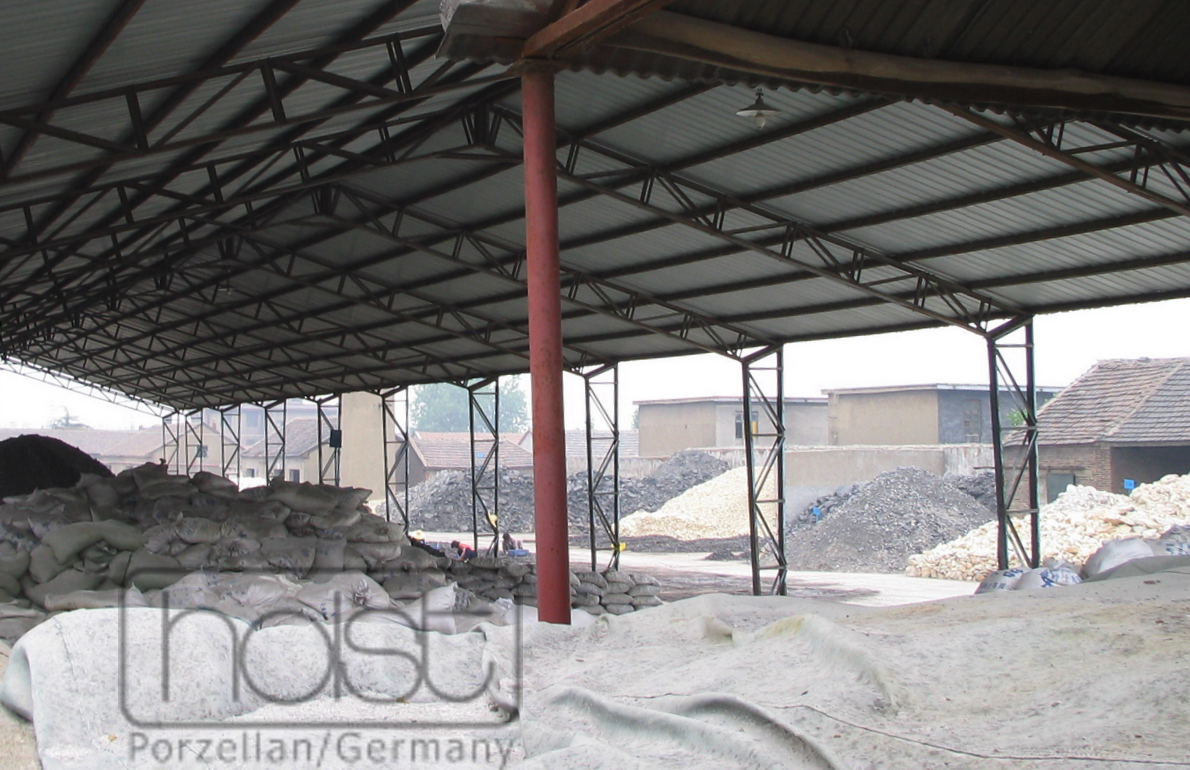
Since the transport of these raw materials from the mines of this world can only be done by truck or by full ship loads, it is relatively easy to draw conclusions as to the size of the company from which a manufacturer can mix his own recipes. This quickly results in raw material stocks the size of several football fields with ranges of 3 to 5 months. In China, the special feature of this is that raw material manufacturers take on this task for a number of factories in the region, which then purchase the ready-mixed raw materials. In terms of costs, this has many advantages and also serves the idea of "outsourcing".
The main disadvantage: If minimal residues (e.g. iron ore) remain due to errors in raw material preparation, defects such as "iron stains in the porcelain" spread like an epidemic right across a whole range of factories.
Types of raw material procurement
Basically, there are only three ways to procure raw materials:
- Own purchase with complete own preparation
- Partial purchase of mixed and unmixed components
- Readymix as purchase of completely finished raw material masses
Raw material processing in mass mills
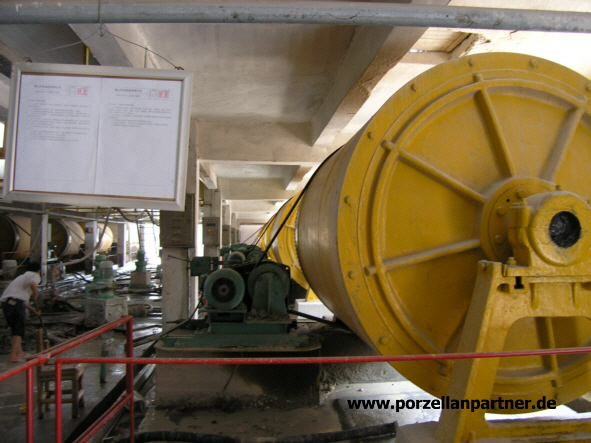
Unfortunately, the earthen materials also contain undesirable substances, in which complicated processes must be separated from the production mass. Iron oxide, for example, can only be extracted from the mass by electromagnetic means. To do this, the mass must first be pulverized, which then passes through magnetic sieves or magnetic tapes that extract the oxide from the powder. This diagram shows the preparation of the raw materials (porcelain masses) in large drum mills. Here the different components are mixed together to form the production mass. Almost every factory has different methods and processes for the preparation of raw materials and keeps these secrets strictly guarded.
With the addition of "Ball Stones", in a seemingly endless process, with different sieves and grids, the material is ground, sifted, ground and sifted again. Depending on the plant and the size of the preparation, the mix is then discharged into huge basins where it is mixed into a pulp. The volume of a large plant in China (picture above) has a capacity of about 50,000 liters and the dimensions of a large swimming pool.
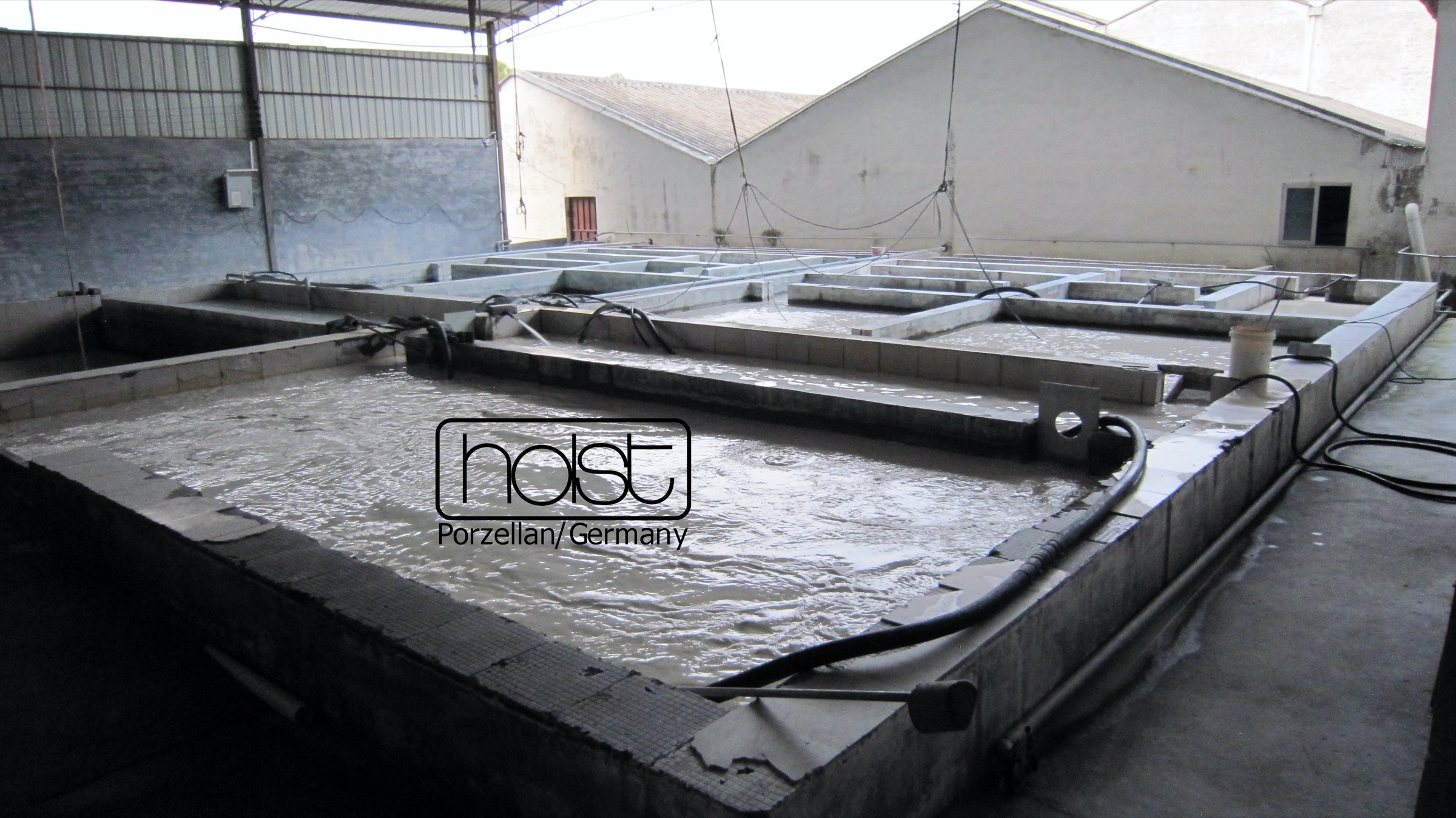
From these tanks - silos in smaller factories - the mass is drained off and prepared for the various production processes.
- Solid masses (for pressing, rolling and turning of porcelain)
- Liquid masses (for pressing, casting and garnishing porcelain)
- Dry granulate (for high pressure/isostatic pressing)
The carefully mixed substances are placed as slurry in storage basins; after further dehumidification by means of filter or vacuum presses, the mass is then formed into flat "cakes" and subjected to a prolonged process of marstification and fermentation in clay vaults or mass cellars ("mauken"), which promotes plasticity. The consistency of the raw materials and above all their undesirable ingredients (minerals and iron ores) determine the degree of purity of the finished porcelain. In contrast to the European raw materials, the Asian masses contain hardly any ore. These metal-containing trace elements are responsible for the "nasty brown and black stains" in porcelain.
Solid masses
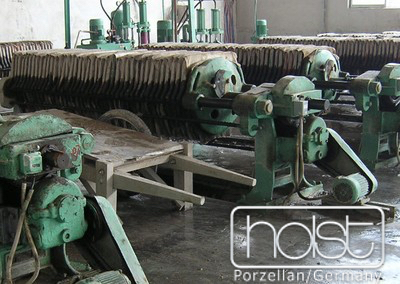
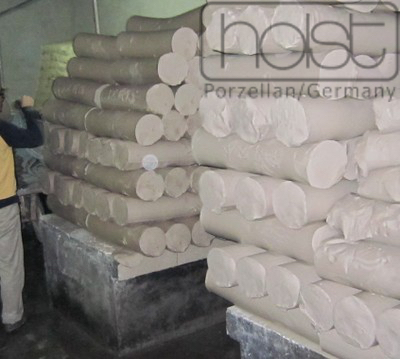
Now the various raw materials are cleaned, rinsed and sieved and are available in the desired purity. Some "top secret" additives can now be added, which in the end will greatly differentiate the properties of the finished product; talc, silicon, soda and many other substances take over important functions in porcelain production. However, everyone agrees on one detail: In the end, the various substances are liquefied and mixed again in order to be prepared for the various types of production.
The slagger (liquid mass)
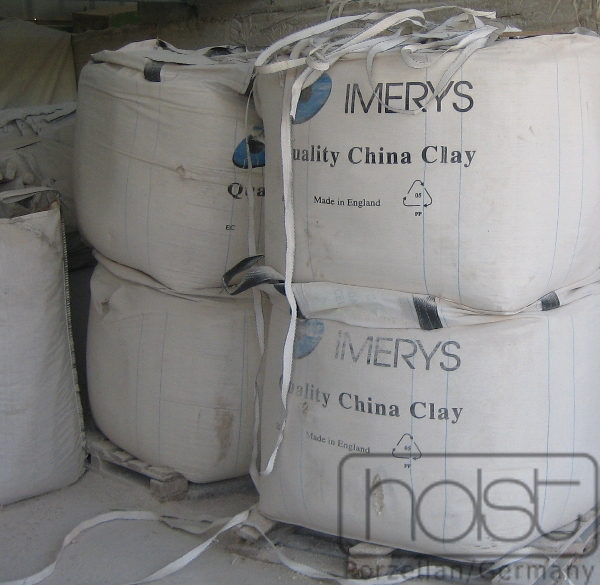
The granules
With advancing mechanization, the types of porcelain production have also developed since the end of the 1980s. For the production of flat parts (mostly plates), today more and more isostatic presses are used, which compress a dry, pulverized granulate under an unimaginable pressure to a porcelain article. Such machines are very expensive on the one hand, and on the other hand the raw material usually costs more than twice as much, but in return the manufacturers have less waste during production.
As of 2007, however, there are only a few suppliers of this production material; the dominant market leader for the granulate used in porcelain production is called Imerys. Since the beginning of this century, this globally operating group of companies has enjoyed a near world monopoly position. One ton of Imerys porcelain granulate costs around € 400 in Germany, € 250 in Turkey and up to € 500 in Egypt. This explains why plates from different countries have such large price differences while maintaining almost the same quality. Here, too, the rule applies: Who needs more, pays less!
